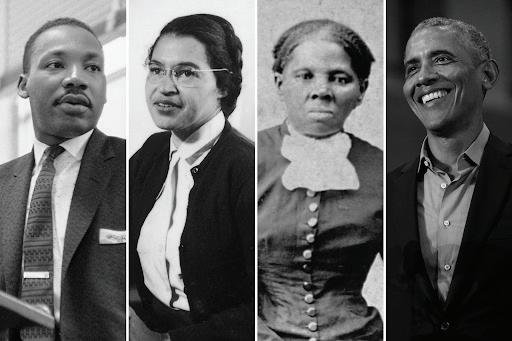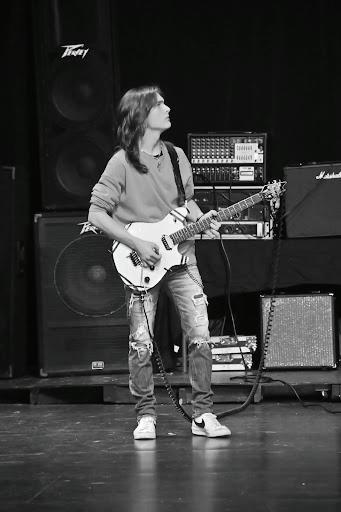
3 minute read
Happy Annual Black History Month; Students celebrate culture, tradition
KRIS GRAY News Editor
According to blackhistorymonth. gov, the first acknowledgment of African-American history was founded by Harvard-trained historian Carter G. Woodson. He eventually went on to create the Association for the Study of Negro Life and History (ASNLH) in order to spread awareness of African Americans’ contributions to society and civilization. The first attempt at acknowledging African-American accounts was the creation of Negro History Week in 1926, dated in February.
Advertisement
This event took root and allowed many other forms of appreciation to spring forth. Many parts of the community participated; the amount of Black history clubs increased, there was a demand for more education, and support from progressive white philanthropists and scholars.
Eventually, the celebration was expanded to a month in 1976 after the initiation of the Civil Rights Movement and increased tolerance of Black people in
America. In an address, President Gerald R. Ford challenged Americans to “seize the opportunity to honor the too-often neglected accomplishments of Black Americans in every area of endeavor throughout our history.” And with that, the association (which was renamed), Association for the Study of African American Life and History (ASAALH) continues to emphasize the importance of Black peoples’ involvement in American history and culture.
Black Student Union (BSU) advisor Ms. Thandiwe Tembo explains that the club intends to show their appreciation by “supporting local black businesses.”
Also, BSU intends to host a “Family Feud” themed activity. Junior Deola Bamidele is a member of the Union and wants the North Harford community to know that “Black history isn’t just a month. It’s around us in the little things that we do.” Bamidele, along with other BSU members, participated in the Talent Show with a step routine. The African American
Registry records that step, also called Step Dancing, is a percussive dance used to produce complex rhythms and sounds through a mixture of footsteps, spoken word and hand-claps. At the show, the students used it to celebrate African-American accomplishments and to urge acknowledgment.
The participants received second place and Bamidele describes how they “felt excited because deciding a step routine was quite hard and [their] practice times were limited. So, [they] felt that [their] hard work paid off.” She adds that the performance “symbolized working together to achieve a goal and working through adversity.”
The British Broadcasting Channel (BBC) identifies another example of African-Americans working through adversity as the number of Black people in Congress has dramatically increased since 1961. In the 87th Congress, there were four total Black representatives in Congress. In 2021, there were 57 in total.
The yearbook staff has worked tirelessly to organize this year’s student teacher talent show, and their hard work paid off. The show drew a crowd of over 400 people and lasted approximately two and a half hours.
Performers ranged from freshmen to seniors, and many staff members as well. The show also included portions of interacting with audience members and judges. The student judges included sophomore Tessa Grove, junior Calvin Rose, and Senior Braxton Rivers. Staff judges included secretaries Mrs. Barbara participate again in next year’s show as well. As for other acts, he enjoyed Jourdan’s performance, and freshman Connor Maxfield’s performance on the bass as well.
Junior Mackenzie Dunaway mentioned how “it went really well because everybody cooperated,” and their high spirits helped to create a more positive environment.
Dunaway worked as a backstage manager, along with senior Rileigh Crawford. She thought her job was cool, because she “got to put on a headset and talk to the tech crew” upstairs in the sound booth. Dunaway didn’t believe the yearbook staff “did enough
Matthews and Mrs. Jean Grimmel, and science teacher Mr. Robert Lamarr.
The show included 19 acts, including singing and dancing, stepping, skits and more.
Judges chose junior Robert Brooks as the overall winner, the Black Student Union for second place, and senior Ethan Jourdan for third place. For their acts, Brooks played the electric guitar with former Hawk Evan Kuzemchak, BSU performed a stepping routine, and Jourdan played the guitar and sang “Creep” by Radiohead.
Brooks originally began playing guitar around four years ago, after being inspired by Eddie Van Halen. He never expected to win the show, and felt “really good and excited” when his name was announced. He would like to promoting” for the show, but she quickly changed her mind after seeing a line of people wrapped around the atrium, waiting to purchase tickets.

The yearbook adviser, Mrs. Carla Harward, explained the backstory behind the show, stating that “six years ago, [her] staff came up with ideas about how [they] could raise money” and America’s Got Talent was becoming really popular at that time. Other schools did, but not NH. So, it was a good way to “get students involved and have a fundraiser at the same time.”
Harward also told us that this year’s staff “hit the ground running right after Christmas” to make the show a success. She is “really proud of the staff this year” and exclaimed that everybody pitched in.








